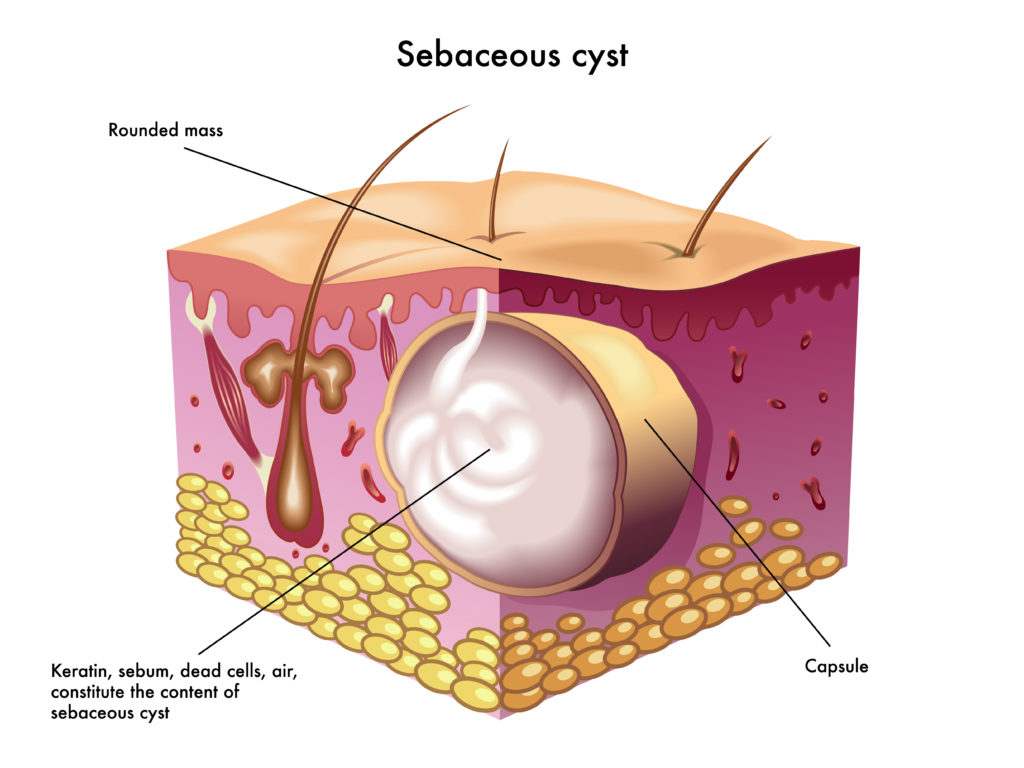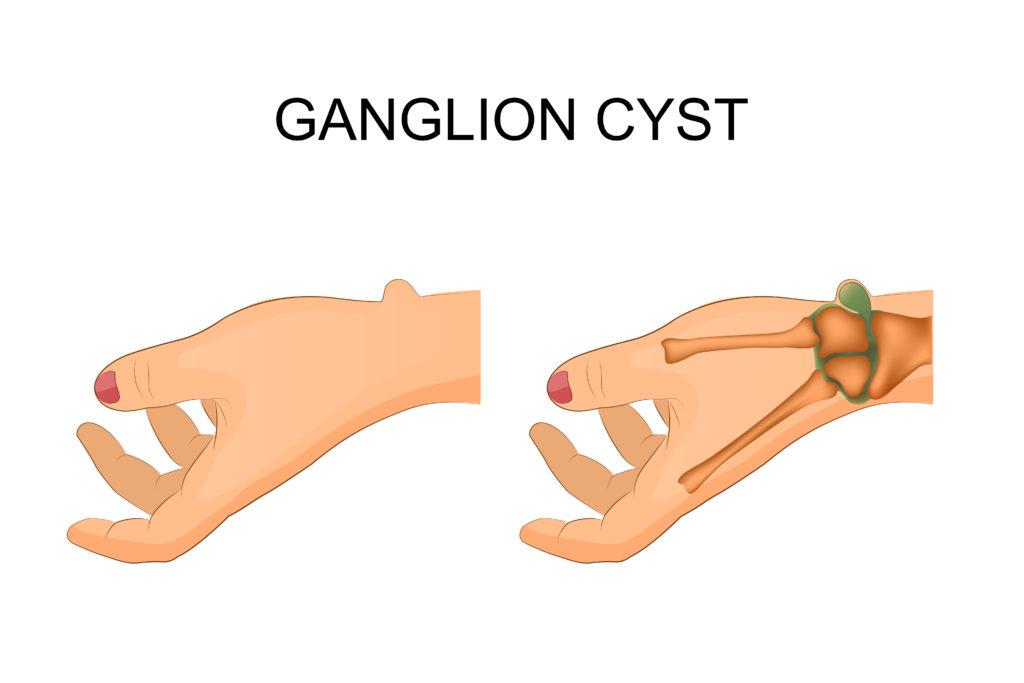A cyst can appear as a bump on your skin. They can grow slowly and have a smooth surface, sometimes tiny or very large. Most cysts are not painful but they can cause problems if they are infected, impinging on a nerve or blood vessel, growing in a sensitive area or affecting the function of an organ. They can form for many different reasons including infections, inherited diseases, genetics, chronic inflammation, or blockages in ducts. There are hundreds of different types of cysts and they can grow almost anywhere on your body. We’ll go over just a few of these types of cysts.
Epidermoid Cyst
These are small bumps filled with the keratin protein. If you have trauma around a hair follicle within the skin, this cyst may occur. The cause of the epidermoid cyst is if the top layer of your skin grows deeper instead of moving outward towards the surface to be shed off, this cyst will have an opportunity to form.
The Epidermoid cyst don’t go away on their own. They are usually never treated because they aren’t dangerous and don’t cause any health risks. If you want it to go away it will have to be surgically removed.
Sebaceous Cyst

This cyst will fill with sebum and is less common than epidermoids. It is often formed within the sebaceous gland, which makes oil for your skin and hair. If they are ruptured or blocked it will cause these cysts to grow. Your doctor will be able to treat this cyst by draining or surgically removing it.
Pilonidal Cyst
These cysts form near the top part of your buttocks and are filled with skin debris, body oils, hair, and other matters. They occur more often in men than in women and in some cases with chronic infections can increase your risk of a type of skin cancer.
If you aren’t experiencing pain, your doctor will prescribe you with an antibiotic. You will also be recommended for follow-up exams and pay attention to hygiene. Your doctor will also give you an option for lancing a cyst, giving you a phenol injection or surgically removing the cyst.
Breast Cyst
This type of cyst can develop in your breast when fluid collects near the breast glands. They can be painful and tender in the affected area as well as commonly occur for women in their 30s and 40s. Not all will need treatment so it is recommended to talk with your doctor to determine treatment.
Ovarian Cysts
These often form when the follicle that normally releases an egg doesn’t open and can cause fluid to build up. It can also occur if the egg is released but improperly closes and collects fluid. Most of the time these cysts are painful and cause no symptoms, in other cases when they are popped, they can cause severe pain.
Treatment for ovarian cysts are limited. Birth control pills help prevent new cysts from developing. Laparoscopy is a surgical removal if the results from an imaging test shows signs of cancer. If you have a large cyst, your doctor can surgically remove the cyst through a large incision in your abdomen.
Ganglion Cyst

These usually form near the joint areas of your wrist, hand or feet and ankles. They tend to occur along a tendon sheath near a joint and it’s unsure of the reason they are caused.
Ganglion cysts often go away without treatment. If they cause pain or discomfort, treatment is necessary by removing fluid or surgically removing it.
Pilar Cyst
This cyst is not cancerous but can grow to a size that can be uncomfortable. These are skin-colored lumps that form under the skin’s surface. Pilar cysts are not typically removed but it is an option for cosmetic purposes.
Cystic Acne
This type of cyst is a combination of bacteria, oil and dead skin clogging pores and is the most severe type of acne. They can be painful to the touch as they grow into large, pus-filled cysts. Your dermatologist can prescribe medications to help treat these cysts but in some cases a combination of therapies may be recommended.
Medical Care
Medical treatment for cysts is always done by a healthcare professional. It is not recommended that you treat any of these conditions by yourself as it can cause you more pain and infections. A healthcare professional will use a sterilized needle to drain any fluids and give you proper medications to reduce inflammation. In most cases, like we discussed previously, they will be surgically removed. Talk with your healthcare provider or dermatologist about your cysts to receive proper treatment and care.
